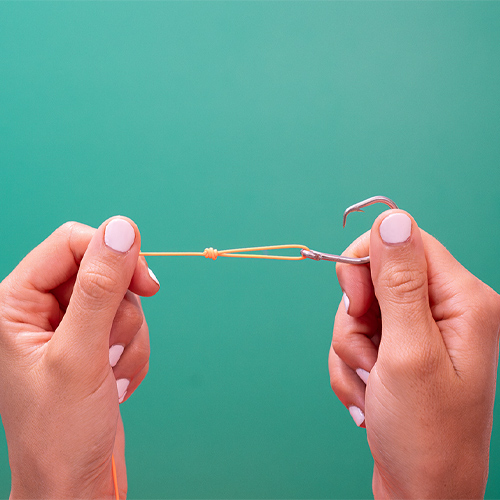Fly Tying Tools
Fly tying tools are the instruments you can use to tie a few basic elements on a hook to create your own artificial flies for fly fishing. You don't need to use any complex fly fishing knot tools or materials. Learn about the different tools you can use.
Best Fly Tying Tools
Beginner fly fishing gear and supplies can include just a fly tying vice, bobbin, hackle pliers, fly tying scissors, and a bodkin. If you're not sure what each of these tools is used for, you can use this fly tying tool guide as a reference.
While there are many different fly tying tools and fly fishing equipment you can use, you only need a few simple tools to begin tying your own flies. These types of tools are often sold together in beginner fly tying tool kits, or you can buy them each separately.
Fly Tying Vises
There are two general types of fly tying vises. You can get either a lever action vise or a rotary action vise. Consider the type and size of flies you plan to tie most frequently when making the decision on which to use. If you plan to tie larger flies to use when you go saltwater fly fishing, then you may want to use a rotary vise that securely holds large hooks and that will allow you to access the underside of the fly as you tie.
The next thing to consider when purchasing your own vise is which type of clamp will be best suited to your fly tying area. There are C-clamp vises that clamp around the edge of a table or desk, and there are pedestal base vises that you can just set down on top of a table or desk.
Fly Tying Bobbins
Bobbins hold the thread spool and maintain tension on the thread. Two of the most common types of bobbins are the spring bobbin and the Chase bobbin. The spring bobbin applies pressure or tension to the thread spool by automatically squeezing the two spring arms together, and a Chase bobbin uses a screw so that you can manually add tension to the thread spool.
Hackle Pliers For Fly Tying
There are a few different types of hackle pliers. To explain hackle pliers in simple terms, they are used to wrap feathers around a hook when tying various fly patterns. Basic clamp hackle pliers are the type most frequently used by beginners. Clamp hackle pliers are made from steel wire with jaws that open and close. Some models also come with flat grip plates that can give you a better grasp on the wire as you wrap the hackle around your hook.
Fly Tying Scissors
Fly tying scissors should have a fine point and be made for close-up work. Look for steel scissors that are tarnish and rust resistant drop forged steel. Once again, there are many different types of fly tying scissors, but serrated scissors typically work best for general fly tying use.
Bodkins For Fly Tying
Bodkins are a useful fly fishing knot tools because they help to loosen hackle fibers, make it easier to place glue or head cement on finished flies, and clear the eye of the hook from any cement or excess fly tying material. Fly tying bodkins should have a sharp and sturdy point that is attached to a weighted handle.
KEEP LEARNING

TakeMeFishing x Teen Vogue
Join us on a creative journey as fashion designer Ahmrii Johnson walks us through her collaborative vision and process with Teen Vogue and fashion brand, Rentrayage, to create a special piece.
LEARN MORE

First Catch Center Trailer Gallery
FCC Trailer Photo Gallery
LEARN MORE

How to Tie a Duncan Knot
Learn to tie a Duncan knot by following these five simple steps. Watch our new video.
LEARN MORE


.png?lang=en-US&ext=.png)